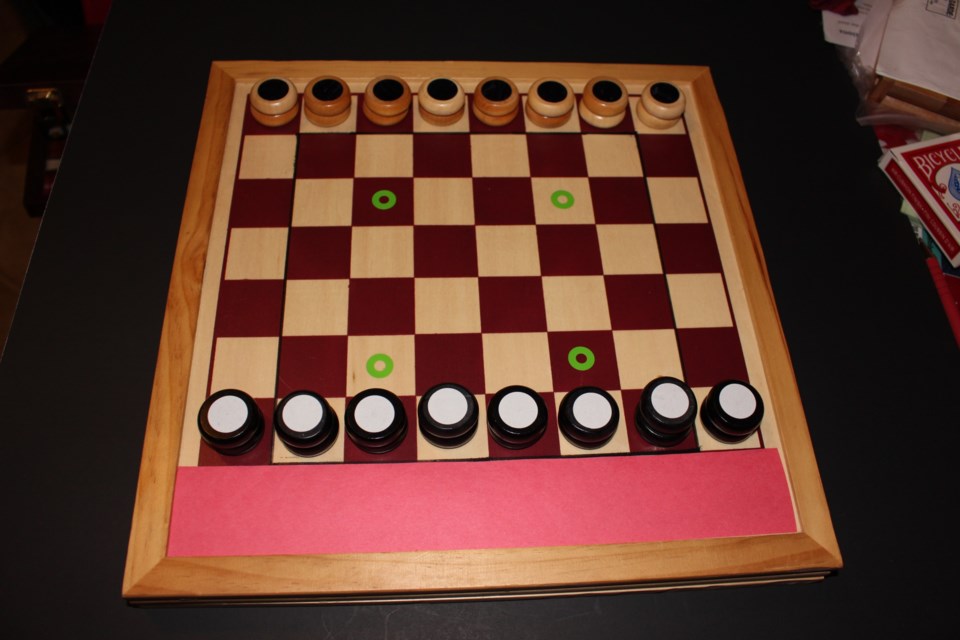Last week readers will be aware the article focused on a new game; Astralis, from game designer Ohli Leduc.
In corresponding on the story with Leduc not surprisingly his game Murus Gallicus came up.
“Murus Gallicus is my flagship blockade game and has a very good track record. It truly has simple rules and complex game play. It is quite scalable. Advanced Murus Gallicus, with its catapults, is actually considered even better by some players,” noted Leduc.
The comment on MG had me looking back since the game was reviewed in this space back in 2011.
That was interesting just to realize this review effort has been going for more than a decade now, or in excess of 500 games, so the exact review of MG was very much a fleeting memory, although that it was a good game did linger.
So looking back MG is a game where you need to be a bit crafty.
As noted in 2011, MG falls into the realm of games where rulesets are created for games utilizing existing game boards and pieces.
Most gamers will own a checker/chess board and a set of checkers. It is about as fundamental element of a board game collection as you can get.
With those simple items there are a wide range of games which can be played simply by accessing online rules and digging out the board and checkers.
Murus Gallicus is one such game.
The game is played on a rectangular board consisting of 56 cells (8x7). A standard checkerboard is 8x8, so you simply ignore one row and away you go.
Each player starts with a set of 16 tokens referred to as stones (the checkers).
At the start of the game, each player takes a set of stones and stacks two stones on each of their eight squares nearest them.
The game is supposed to reflect Romans versus Gauls, so the Roman player uses the light pieces, and the Gaul player uses the dark ones.
The basic units of the game are towers and walls. A tower consists of two like-colored stones in a cell (the starting formation is all towers), and are the only pieces which can move in the game.
A wall is a single stone in a cell. Walls block movement and can also act as stepping stones which can be used later in the creation of new towers.
A tower moves by a sowing method. Pick up the two pieces and seed forward, one each in consecutive spaces, which can include on top of single wall pieces of the same colour.
Tower stones can be used to remove adjacent opponent walls, through a sacrifice, so both players lose a piece.
The game sounds simple, and it is in terms of rules, but elements such as set formations, learned as you gain experience, make strategy important.
As examples there is the Gallic Wall consisting of orthogonally connected walls (and sometimes towers) requiring the opponent to go around the wall or blast his or her way through using a sacrificed stone; The Chariot consists of a tower, wall and empty space aligned, and the battering ram consists of two towers and an opponent’s wall aligned whereby sacrificing a tower stone, the opponent's wall can be removed.
Another layer is added with advanced rules which emerged after the initial review.
The variant adds catapults to the mix. All the standard rules above apply but the stacking limit is raised to three stones of like color. These stacks of three are the catapults. Towers can distribute onto other towers to create catapults. On a turn a player may fire a catapult instead of using a tower.
Catapults:
- Do not move,
- They block movement similar to a tower, and
-
They can throw one of their stones two or three spaces away in all five forward and sideways directions into an empty or opponent occupied cell. Intervening cells may be occupied by either player or empty. After firing the catapults becomes towers.
- If the stone lands on an opponent’s occupied cell, one of the opponent stones and the thrown stone are removed from the game - the material balance is maintained!
-
If the thrown stone lands in an empty cell, it becomes a wall.
- Towers can sacrifice a stone to reduce an adjacent opponent catapult to a tower or sacrifice themselves (two stones) to reduce an adjacent catapult to a wall.
These rules likely speeds play somewhat, but adds a dynamic element, with losing the overall ancient ‘feel’ of the game.
And therein lies the lasting charm of Murus Gallicus, it plays like a much older game. You actually get the feeling Romans might have played this in the shadow of the Hadrian's Wall. That is praise, at least in my books.
So if the checker board has been gathering dust search Murus Gallicus online for the full rules, pull out the board and pieces and explore a game with simplicity and depth.




